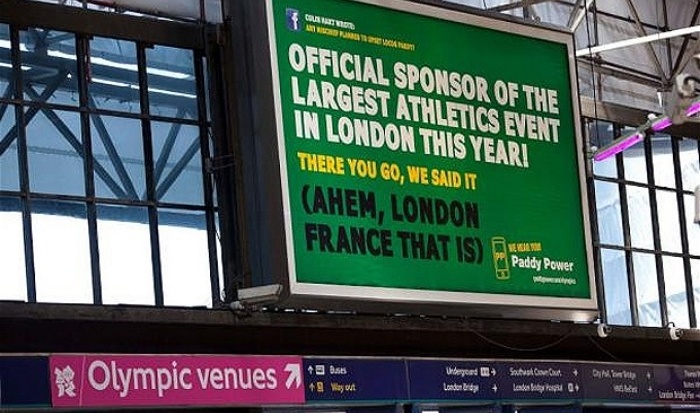Some of these fall short of expectations because the devised activity is not genuinely relevant to the brand or the trend. Others are propelled into the stratosphere (and we don’t just mean Red Bull) by fusing a current trend with clear brand positioning. If marketing is done right, brands can leave a lasting impression that people will undoubtedly share in conversations with friends and on social networks.
Here are some interesting examples of brands that have found novel ways to embrace trends; and successfully packaged brand experiences around these trends to amplify key brand messages:
Wow experiences
Nokia – Lumia 800 launch
In November last year Nokia launched its Lumia 800 by transforming the Millbank Tower in London into a giant canvas for a spectacular “4D” projection show. The brand teamed up with popular DJ Deadmau5 and gave the crowd an experience that was memorable, unique and certainly a conversation starter.
Pop-Up
Anthon Berg – Generous Store
Danish chocolate brand Anthon Berg opened a pop-up store that was stocked with an array of gift boxes. Yet, customers couldn’t pay for the chocolates with cash instead they paid with the promise of a good deed. They were asked to post their pledge to their Facebook page. This extended the reach beyond the store in Copenhagen and created a global buzz for the chocolatiers.
Mobile/Gaming
Nike – Catch the Flash
Nike combined real world action with ARG (alternate reality gaming) to deliver a fun and fresh campaign in Vienna, Austria. Catch the Flash used real runners, wearing GPS tracking devices and special reflective jackets, for a city-wide game of tag. Players could track the Nike runners on their mobiles and then had to chase after them and tag them by taking a photo.
Ambush
Paddy Power – Ahem, London France…
The Olympics, gifted marketers with a theme on which to build relevant activity. Bookmaker Paddy Power was not an official sponsor and so was not able to use the Olympic brand to its advantage. Instead the marketing team came up with this clever campaign. Billboards appeared in major train stations in London, just before the Olympics, claiming that Paddy Power was the “official sponsor of the largest athletics event in London this year”. In fact the billboards referred to an egg and spoon race in London, France not the Olympics. LOCOG attempted to have the billboards removed but as Paddy Power didn’t refer specifically to the Olympics all legal proceedings were very short-lived and the billboards remained in situ. Very clever.
Digital tags
The use of digital tags such as QR codes, NFC and RFID technology has been growing in recent years and the trend doesn’t seem to be slowing down. Brands keep coming up with innovate ways to integrate digital tags into campaigns to deliver personalised, time relevant and tailored content at the tap of a button.
QR codes
Tesco – Underground Shopping
Tesco came up with this ingenious idea to help increase its market share in South Korea. The retailer provided “underground shopping” for commuting customers using QR code technology.
RFID
Strongbow Gold
OK so this is just a prototype, but it demonstrates just how far marketers are pushing boundaries with the use of new technology. To launch its new premium brand Strongbow is developing a RFID bottle top. When opened, the bottle emits a radio signal that can activate anything the brand wants. It can be set up to trigger lights, play music or set off streamers – the possibilities are seemingly endless!
We’ve started to come across more and more faux brand experiences. To all of us living in the real world, our view is that this is a seriously missed experiential opportunity. Experiential events designed for online chatter could quickly lose credibility, becoming just another form of broadcast advertising. Why don’t the digital/ad boys & girls do these sorts of experiences for real? A collective brand experience where people are linked together by each other’s actions or common interests can be very powerful for the right brands. Doing something great offline is a natural starting point for people to get talking with one another online.
So what’s going to be the next big thing? Well, we’re always on the look out for what consumers are responding to in order to devise brand experiences for our clients that get people talking. Our creative team have plenty of ideas up their sleeves and if you’d like to find out what might be relevant for your brand, we’d love to hear from you.
Recently we blogged about 6 ways to engage consumers by creating a brand experience, click the link if you want to see some other great examples.